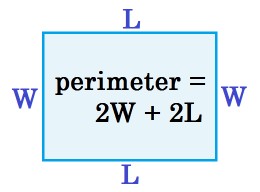The width of a rectangle is fixed at 28 cm. What lengths will make the perimeter greater than 72 cm?
1 Answer
Oct 16, 2015
Explanation:
Start by writing down the formula for the perimeter of a rectangle

#"perimeter" = P = 2 xx (l + w)" "# , where
In your case, you know that the width of the rectangle is set at
#P = 2 xx (l + 28) = 72#
#l + 28 = 72/2#
#l = 36 - 28 = "8 cm"#
This means that for any length that exceeds
#2 x (l + 28) > 72#
#l + 28 > 36#
#l > "8 cm"#
SIDE NOTE Don't be confused by the fact that the length turned out to be "shorter" than the width, that happens in some cases.

